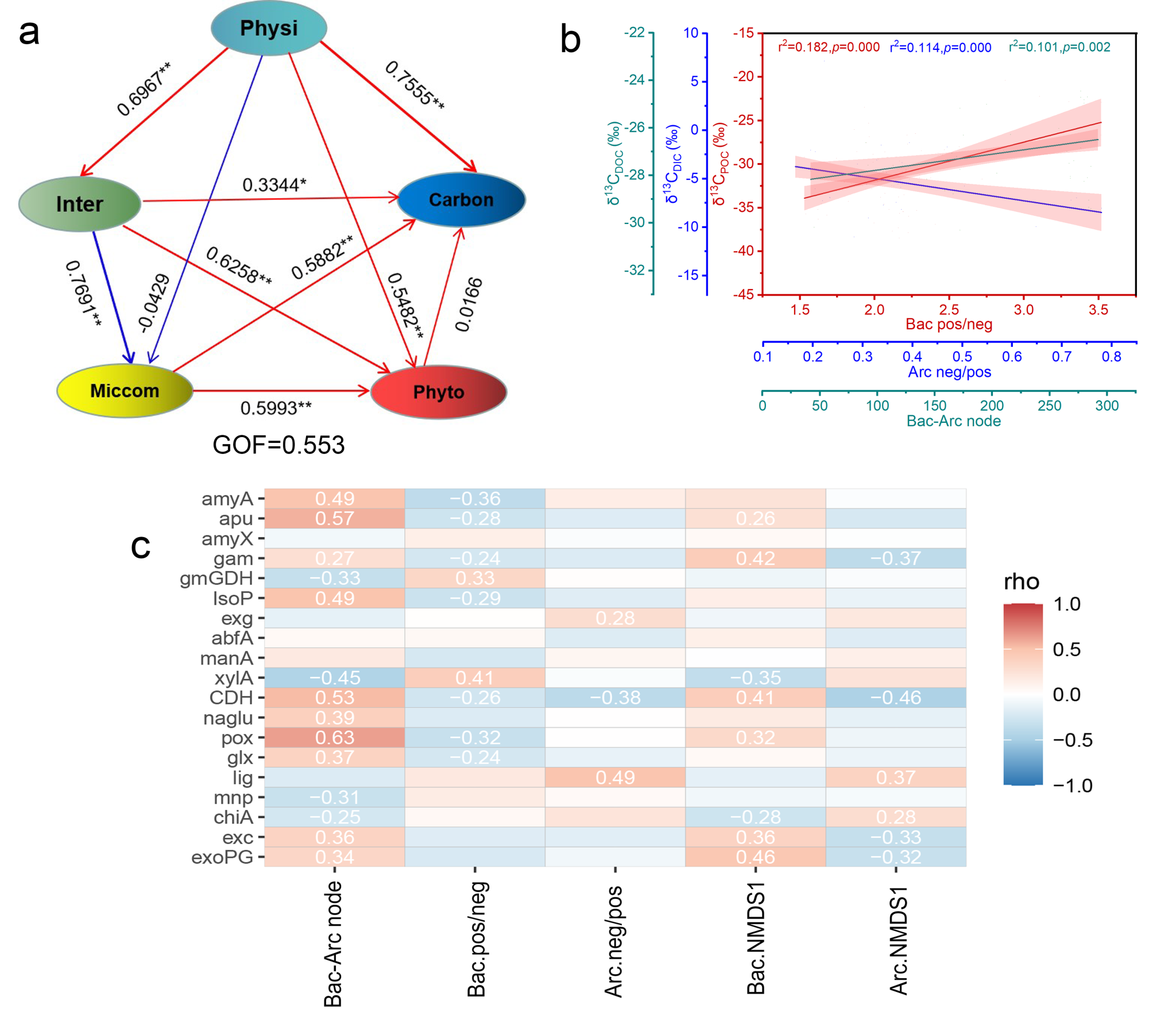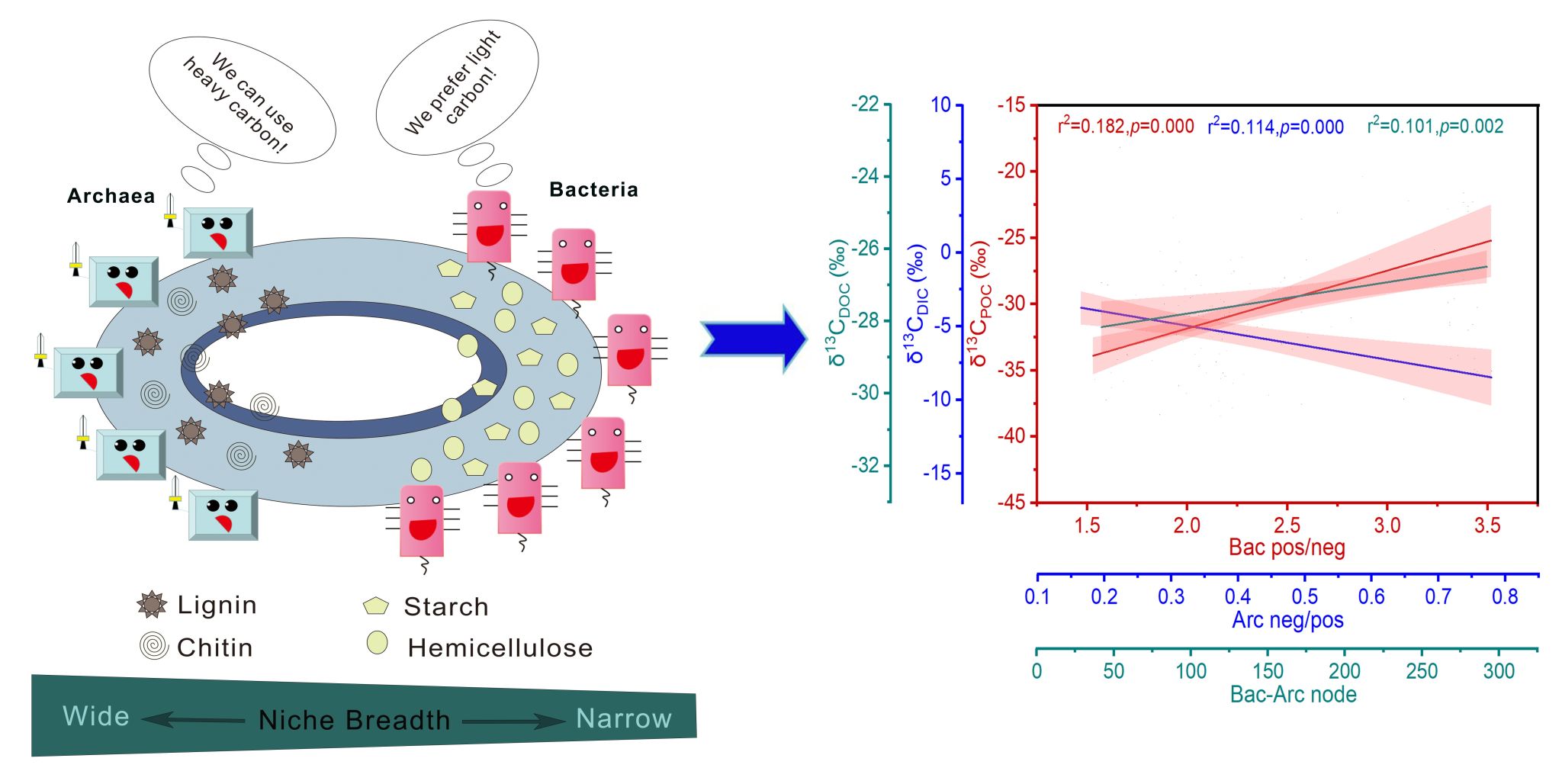Microbial world constitutes the life support system of the biosphere, and their biodiversity and activities will affect the resilience of all other organisms because of the impact on production and consumption of greenhouse gases. In aquatic ecosystems, carbon is efficiently transferred up and down through microbial mediation and participates in the metabolic cycle of higher organisms. In addition to direct microbe-mediated effects on carbon cycling, intraspecific or interspecific interactions could induce significant changes in community composition and the dissimilatory rate. Therefore, a comprehensive investigation of microbial interactions and their carbon effects will be imperative for comprehending microbe-mediated carbon cycling.
Combined with carbon stable isotope analysis and high-throughput sequencing technology, the underlying mechanism of microbial interactions for organic carbon degradation has been elucidated. Niche differentiation enabled archaea to coexist with bacteria mainly in a cooperative manner. Bacteria composed of specialists preferred to degrade lighter carbon, while archaea were capable of utilizing heavier carbon. Microbial resource-dependent interactions drove stepwise degradation of organic matter. Bacterial cooperation directly facilitated the degradation of algaedominated particulate organic carbon, while competitive feeding of archaea caused by resource scarcity significantly promoted the mineralization of heavier particulate organic carbon and then the release of dissolved inorganic carbon. Meanwhile, archaea functioned as a primary decomposer and collaborated with bacteria in the gradual degradation of dissolved organic carbon.
This study emphasized microbial interactions driving carbon cycle and provided new perspectives for incorporating microorganisms into carbon biogeochemical models.
Article information:
Meiling Yang, Na Liu, Baoli Wang*, Yajun Li, Wanzhu Li, Xinjie Shi, Xinrui Yue, Cong-Qiang Liu. Stepwise degradation of organic matters driven by microbial interactions in China΄s coastal wetlands: Evidence from carbon isotope analysis. Water Research. DOI: 10.1016/j.watres.2023.121062.
Fig.1 Factors affecting the conversation and degradation of organic carbon. Partial Least Squares Path Modeling (PLS-PM) describes the effects of physicochemical factors (Physi), microbial interaction (Inter), microbial community composition (Miccom), phytoplankton biomass (Phyto) on carbon isotope fractionation (Carbon)(a). Carbon isotope composition versus microbial interactions(b). Spearman correlation analysis between microbial interactions and carbon-degradation related genes with a P value < 0.05(c).
Fig.2 Schematic diagram about stepwise degradation of organic matters driven by microbial interactions in China΄s coastal wetlands.

Fig.1

Fig.2